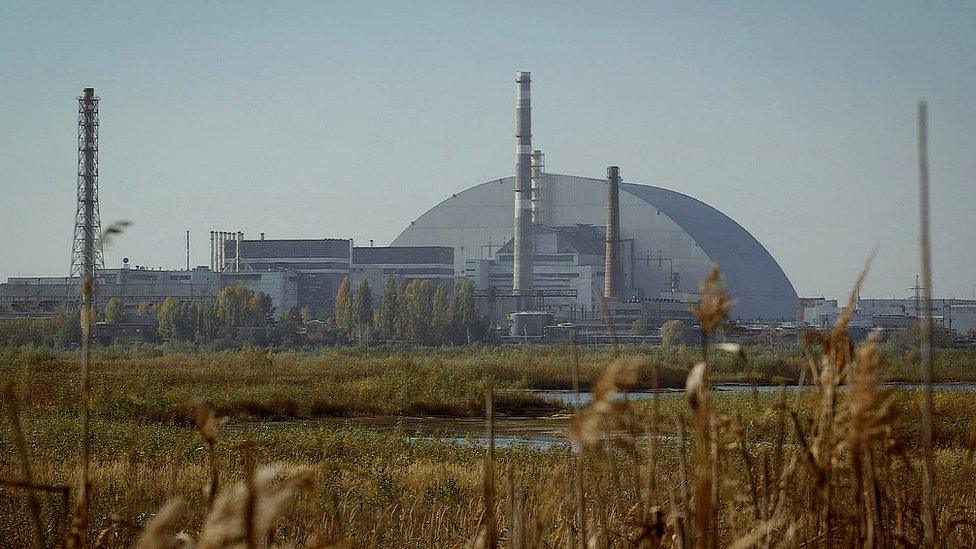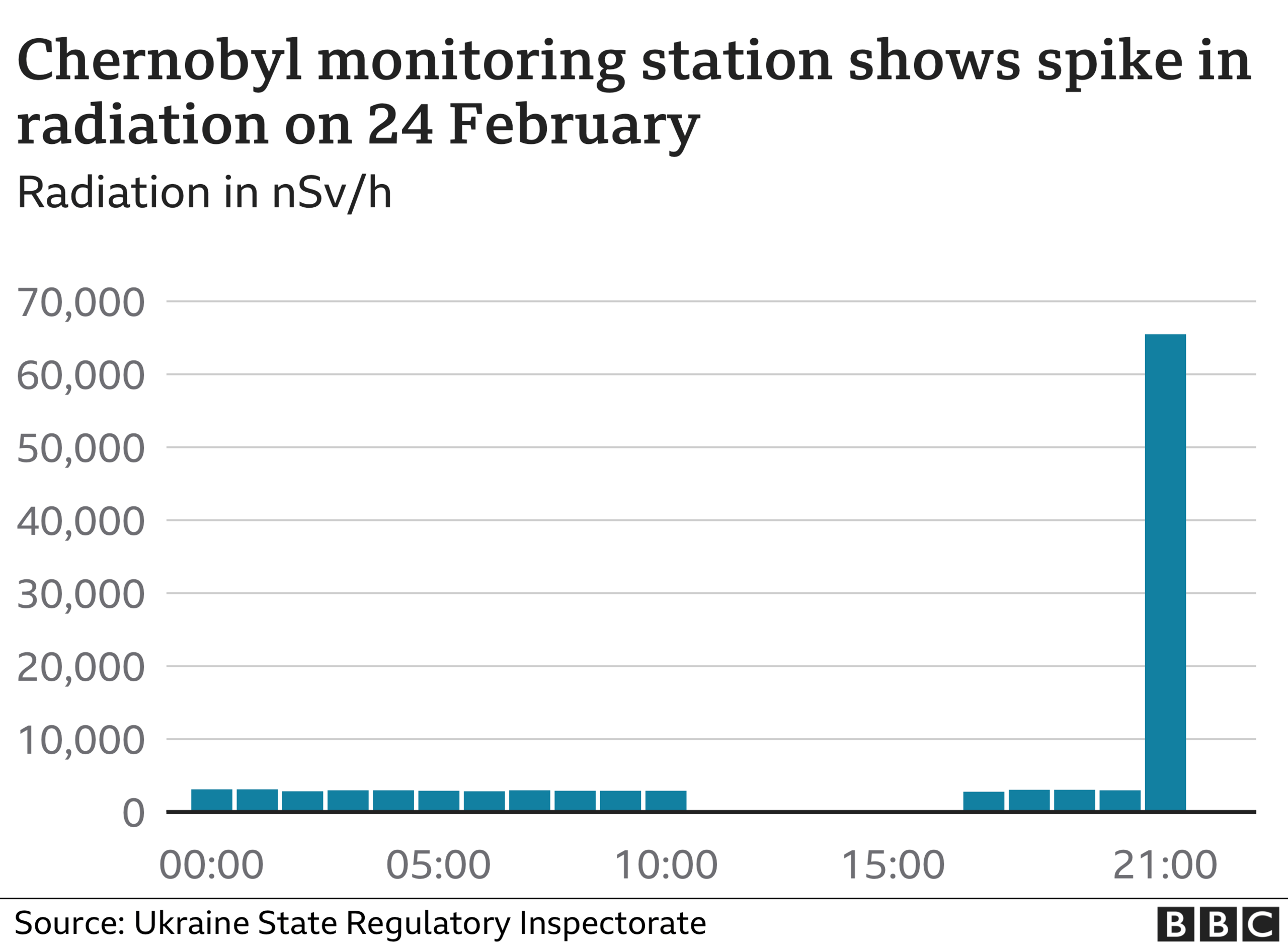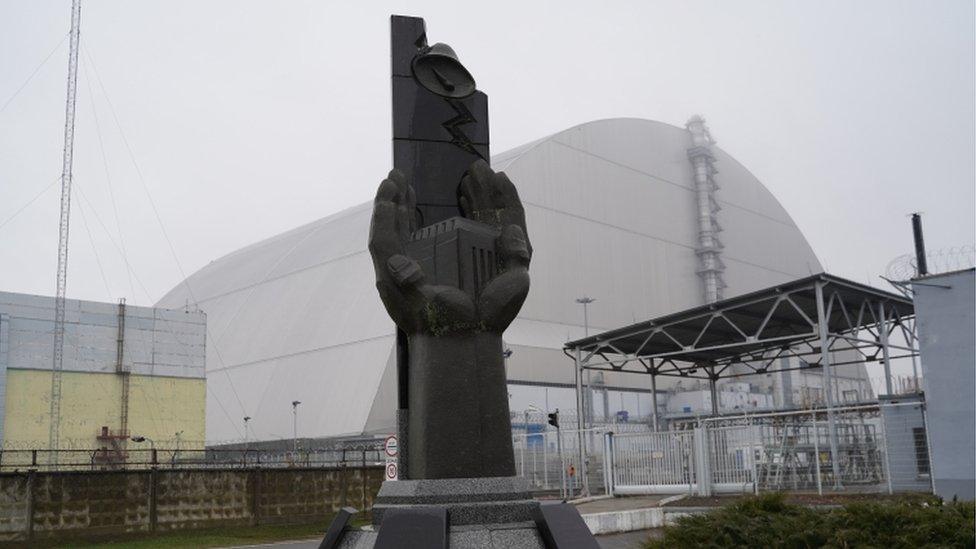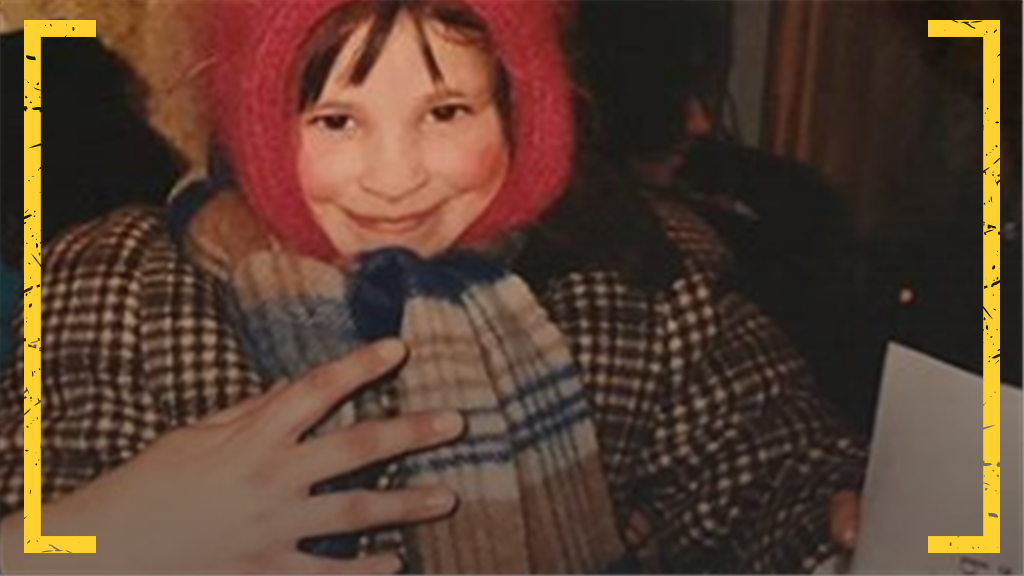Chernobyl: Why radiation levels spiked at nuclear plant
- Published

The Chernobyl site contains several nuclear waste containment facilities to prevent radioactive materials spreading
A radiation spike has been recorded near Chernobyl's nuclear power plant which has been seized by Russian forces, monitoring data shows.
Invading Russian troops took control of the plant - the site of the world's worst nuclear disaster in 1986 - on Thursday, Ukraine said.
Radiation levels increased about 20-fold on Thursday, external, monitoring stations there reported.
But experts say another major nuclear disaster there is "extremely unlikely".
The rise was caused by heavy military vehicles stirring contaminated soil in the 4,000-sq-km (2,485 sq-mile) exclusion zone surrounding the abandoned plant, Ukraine's State Nuclear Regulatory Inspectorate reported , external.
The biggest spike was recorded close to the damaged reactor.
Radiation levels are continuously monitored there - measured as a dose that you would receive per hour in a location.
Close to the reactor, you would normally receive a dose of about three units - called microsieverts - every hour. But on Thursday, that jumped to 65 microSv/hrs - about five times more than you would get on one transatlantic flight.

Prof Claire Corkhill, a nuclear materials expert from Sheffield University, told the BBC the spike was "quite localised" and there had been increases along the main routes in and out of the zone around the reactor.
"The increased movement of people and vehicles in and around the Chernobyl zone will have kicked up radioactive dust that's on the ground," Prof Corkhill said.
"Provided there's no further movement, it should decrease again over the next couple of days."
But any military activity in the zone is concerning.
Russian troops captured the plant, about 130km (80 miles) north of the capital, Kyiv, after a fierce battle with Ukrainian forces, according to Ukrainian officials.
Ukraine's President Volodymyr Zelensky said Ukrainian officers fought to defend it, "so that the tragedy of 1986 will not be repeated." He called the Russian assault on Chernobyl a "declaration of war against the whole of Europe."
Russian officials have not commented on the battle.

Russia attacks Ukraine: More coverage
THE BASICS: Why is Putin invading Ukraine?
IN MAPS: How Russia carried out the invasion

The Chernobyl site contains several nuclear waste containment facilities - including the so-called "new safe confinement" - a huge protective dome that covers reactor number four, the reactor that infamously exploded, causing the 1986 disaster.
"These buildings are designed for containment, to keep radioactive materials inside, but they're not necessarily armoured: they're not designed to operate in a war zone," Prof Corkhill said.
The radioactivity in the plant has decayed significantly since 1986. "And the thing that released the radioactivity then was a huge fire," said Prof Corkhill. But she stressed a repeat of that disaster was "extremely unlikely".
Of much more concern is any fighting close to Ukraine's other working nuclear reactors.

Nuclear policy expert Prof James Acton wrote on Thursday, external: "Chernobyl is inside a large uninhabited space. Ukraine's other reactors are not similarly isolated.
"Nuclear power plants," he added, "are not designed for war zones."
The International Atomic Energy Agency (IAEA) said Ukraine informed it on Friday that the country's nuclear power reactors were continuing to operate "safely and securely".
- Published25 February 2022

- Published14 February 2019

- Attribution
- Published14 January 2020
